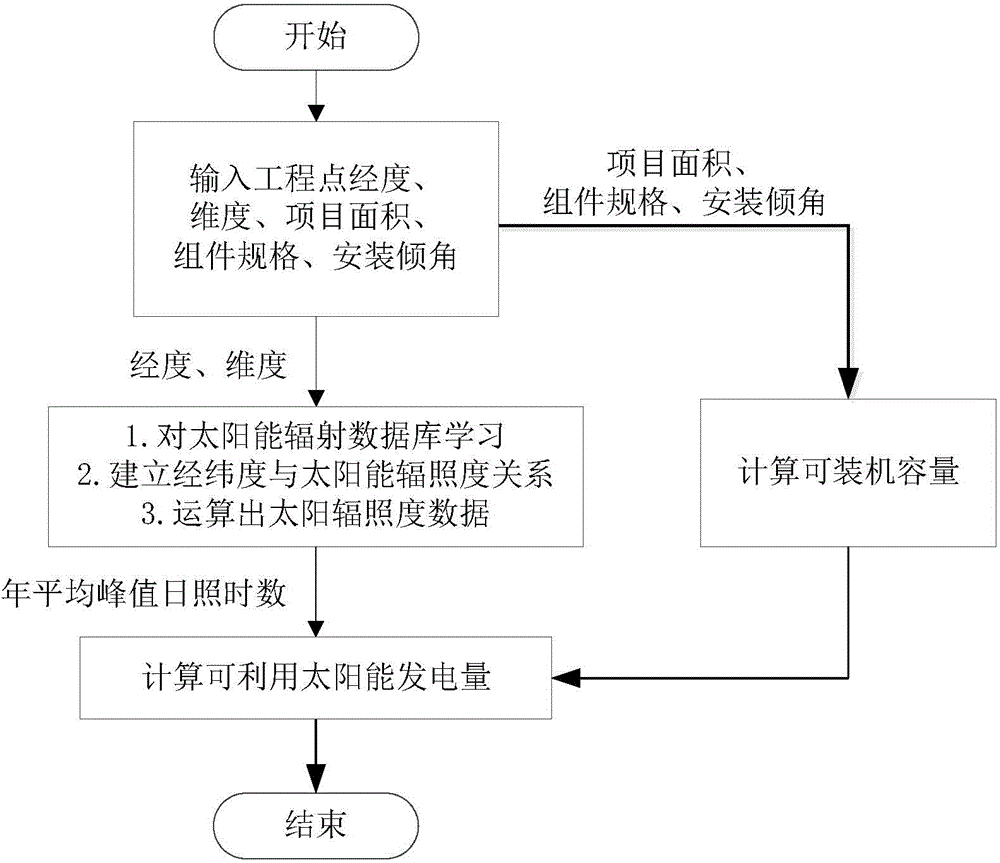Solar power generation capacity prediction method for photovoltaic power station
A photovoltaic power station and forecasting method technology, applied in forecasting, data processing applications, instruments, etc., can solve problems such as the inability to obtain available solar power generation, achieve objective forecasting and evaluation results, and improve accuracy
- Summary
- Abstract
- Description
- Claims
- Application Information
AI Technical Summary
Problems solved by technology
Method used
Image
Examples
Embodiment Construction
[0028] The present invention will be further introduced below in conjunction with the accompanying drawings and specific embodiments.
[0029] like figure 1 Shown is the flow chart of the method for predicting the amount of solar power that can be used by photovoltaic power plants in the present invention, and the method includes the following steps:
[0030] (1) Calculate the average annual peak sunshine hours and the installed capacity of the photovoltaic power station in the area where the photovoltaic power station is located in recent years.
[0031] The BP neural network LM algorithm is used to calculate the average annual peak sunshine hours in the area where the photovoltaic power station is located in recent years. The specific process is as follows: learn and train the solar radiation database obtained from long-term observations by different solar radiation observation stations, and the input layer neurons are the items The longitude and latitude of the location, t...
PUM
 Login to View More
Login to View More Abstract
Description
Claims
Application Information
 Login to View More
Login to View More - R&D
- Intellectual Property
- Life Sciences
- Materials
- Tech Scout
- Unparalleled Data Quality
- Higher Quality Content
- 60% Fewer Hallucinations
Browse by: Latest US Patents, China's latest patents, Technical Efficacy Thesaurus, Application Domain, Technology Topic, Popular Technical Reports.
© 2025 PatSnap. All rights reserved.Legal|Privacy policy|Modern Slavery Act Transparency Statement|Sitemap|About US| Contact US: help@patsnap.com



